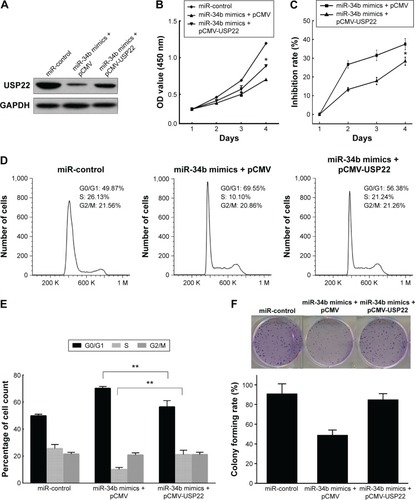Figures & data
Figure 1 miR-34b expression in NPC tissue samples and cell lines.
Abbreviations: NPC, nasopharyngeal carcinoma; qRT-PCR, quantitative reverse transcription-polymerase chain reaction.
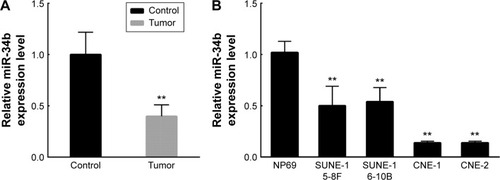
Figure 2 Ectopic overexpression of miR-34b suppressed the proliferation of SUNE-6-10B cells and induced G0/G1 cell cycle arrest in vitro.
Abbreviations: MTT, 3-(4,5-dimethyl-2-thiazolyl)-2,5-diphenyl-2H-tetrazolium bromide; GAPDH, glyceraldehyde 3-phosphate dehydrogenase; ANOVA, analysis of variance; OD, optical density.
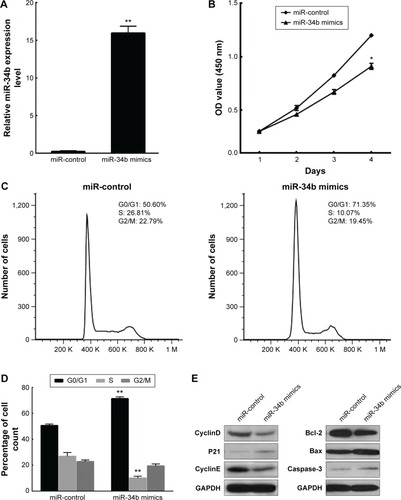
Figure 3 miR-34b targets the 3′-UTR of the USP22 gene.
Abbreviations: 3′-UTR, 3′-untranslated region; USP22, ubiquitin-specific peptidase 22; qRT-PCR, quantitative reverse transcription-polymerase chain reaction; GAPDH, glyceraldehyde 3-phosphate dehydrogenase; ANOVA, analysis of variance; wt, wild type; Ploy A, polyadenylic acid; CMV, Cytomegalovirus.
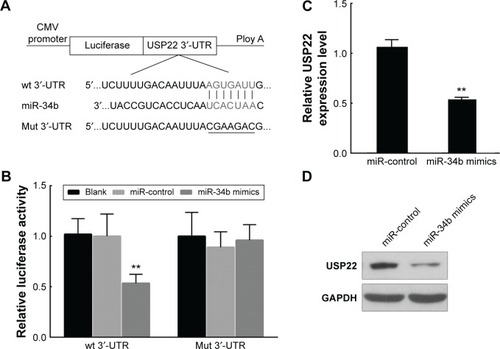
Figure 4 USP22 regulates the proliferation and cell cycle of SUNE-6-10B cells in vitro.
Abbreviations: USP22, ubiquitin-specific peptidase 22; RT-PCR, reverse transcription-polymerase chain reaction; NPC, nasopharyngeal carcinoma; MTT, 3-(4,5-dimethyl-2-thiazolyl)-2,5-diphenyl-2H-tetrazolium bromide; siRNA, small interfering RNA; ANOVA, analysis of variance; GAPDH, glyceraldehyde 3-phosphate dehydrogenase; OD, optical density.
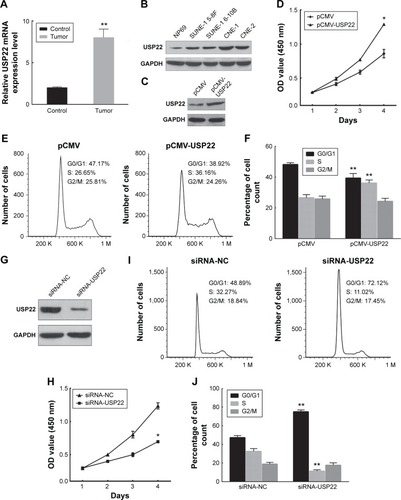
Figure 5 miR-34b represses USP22 to suppress SUNE-6-10B growth.
Abbreviations: USP22, ubiquitin-specific peptidase 22; MTT, 3-(4,5-dimethyl-2-thiazolyl)-2,5-diphenyl-2H-tetrazolium bromide; GAPDH, glyceraldehyde 3-phosphate dehydrogenase; OD, optical density.
